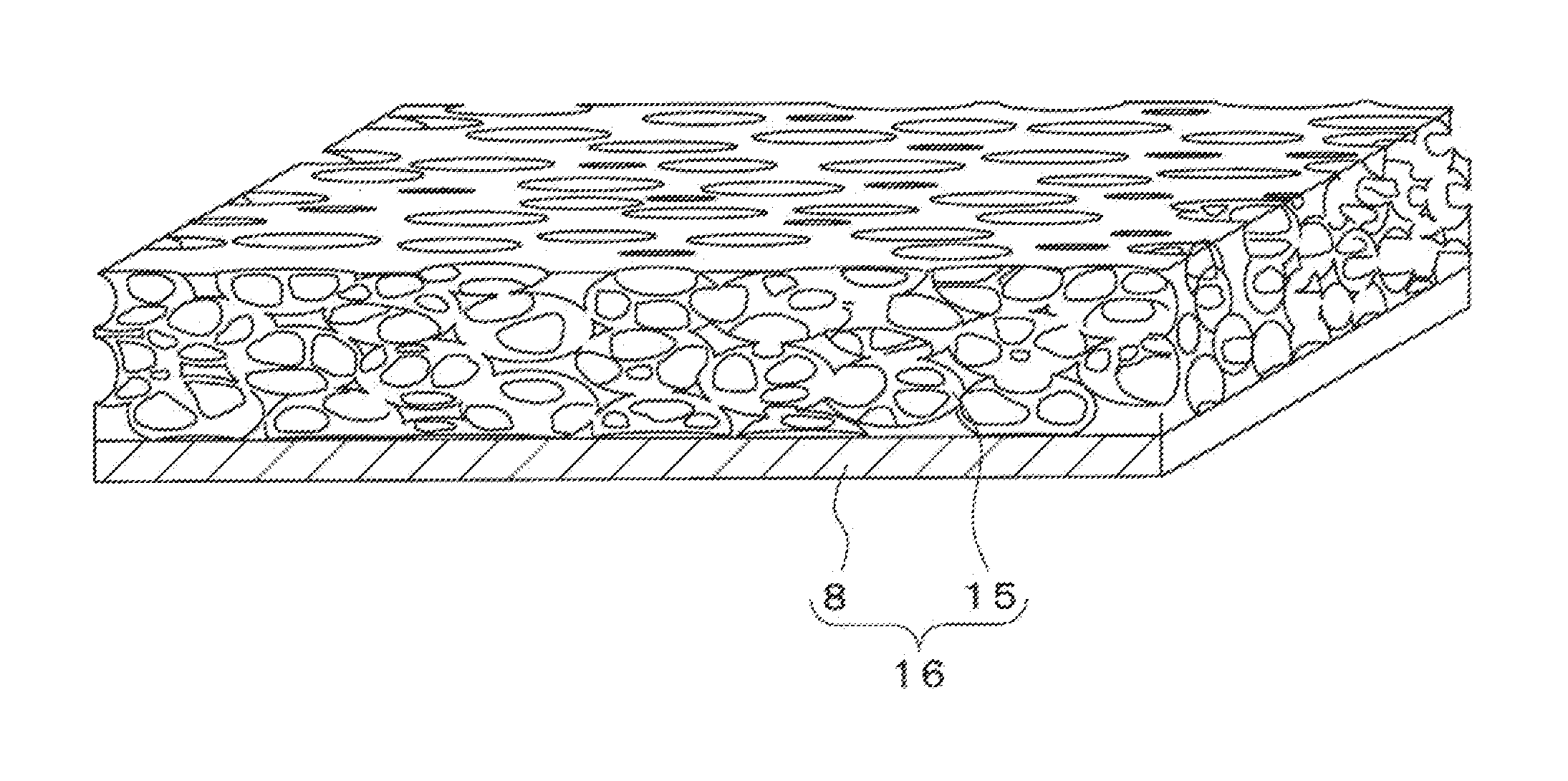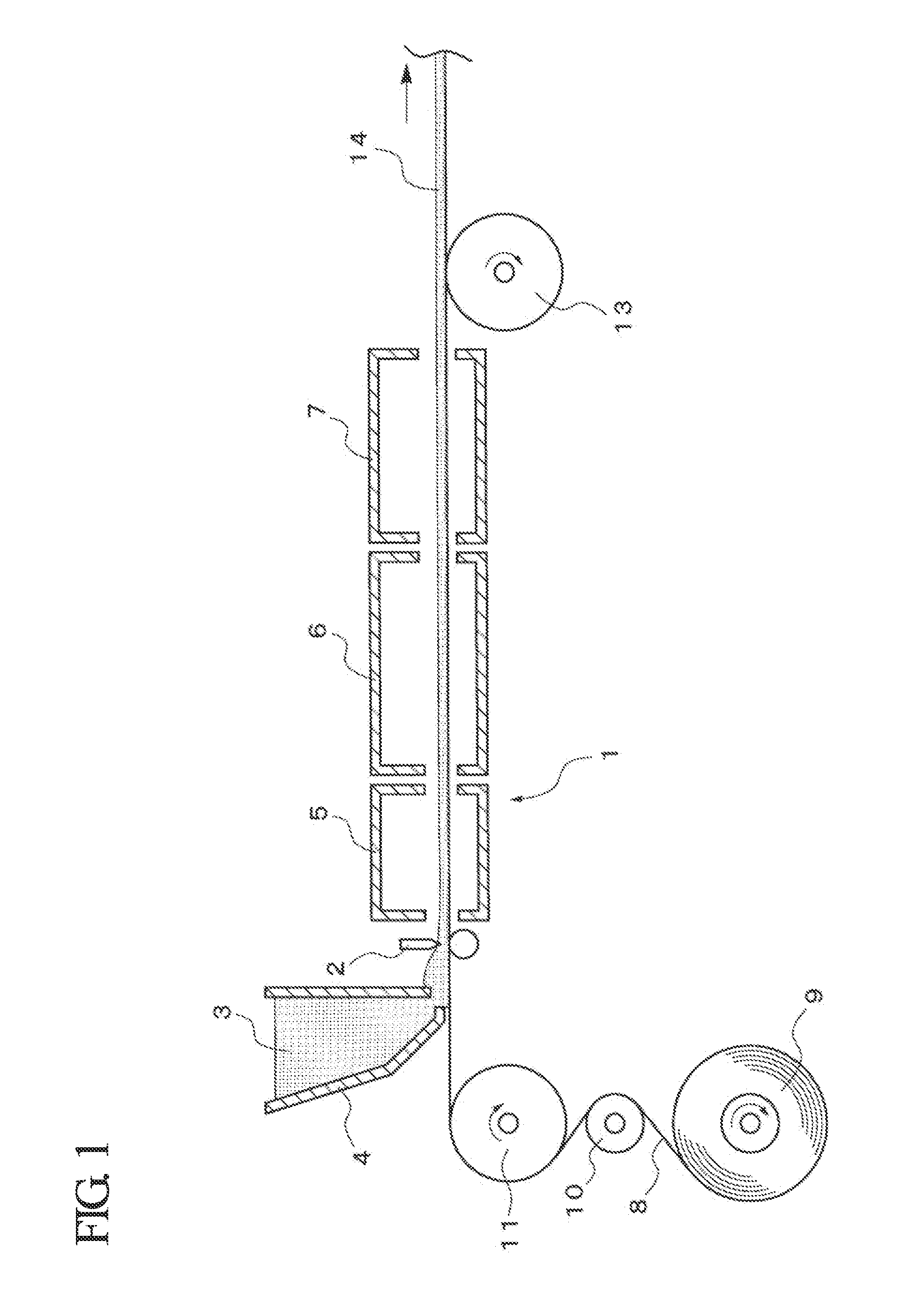Process for production of aluminum complex comprising sintered porous aluminium body
a technology of aluminum complex and sintered porous aluminum body, which is applied in the direction of cell components, coatings, transportation and packaging, etc., can solve the problems of inability to press aluminum, excessive casting pressure, and inability to achieve high output and high energy density, so as to reduce the strength of porous sintered body, secure viscosity and handling strength, and inhibit the sintering reaction
- Summary
- Abstract
- Description
- Claims
- Application Information
AI Technical Summary
Benefits of technology
Problems solved by technology
Method used
Image
Examples
examples 1 to 16
[0085]Al powders having average particle diameters of 2.1 μm, 9.4 μm, 24 μm, 87 μm, and 175 Ti powders having average particle diameters of 9.8 μm, 24 μm, and 42 μm, and TiH2 powders having average particle diameters of 4.2 μm, 9.1 μm, and 21 μm were prepared. Then, in accordance with the aforementioned embodiment, the Al powder was mixed with the Ti powder and / or the TiH2 powder at the ratios shown in Table 1 to prepare raw aluminum mixed powders 1 to 10, and binder solutions 1 to 5 having the compounding compositions shown in Table 2 were prepared. They were kneaded with a water-insoluble hydrocarbon-based organic solvent at the ratios shown in Table 3 to manufacture viscous compositions of Examples 1 to 16.
TABLE 1Raw aluminum mixed powderAluminum powderSintering aid powderComposition (% by weight)AverageAverageSinteringAl andparticleMixing ratioparticleaidinevitablediameter(% by weight)diameterAluminumpowderFeSiNiMgCuimpurities(μm)TiTiH2(μm) rpowderWW / rRaw aluminum0.150.050.01——r...
PUM
| Property | Measurement | Unit |
|---|---|---|
| particle diameter | aaaaa | aaaaa |
| particle diameter | aaaaa | aaaaa |
| pore diameters | aaaaa | aaaaa |
Abstract
Description
Claims
Application Information
 Login to View More
Login to View More - R&D
- Intellectual Property
- Life Sciences
- Materials
- Tech Scout
- Unparalleled Data Quality
- Higher Quality Content
- 60% Fewer Hallucinations
Browse by: Latest US Patents, China's latest patents, Technical Efficacy Thesaurus, Application Domain, Technology Topic, Popular Technical Reports.
© 2025 PatSnap. All rights reserved.Legal|Privacy policy|Modern Slavery Act Transparency Statement|Sitemap|About US| Contact US: help@patsnap.com



